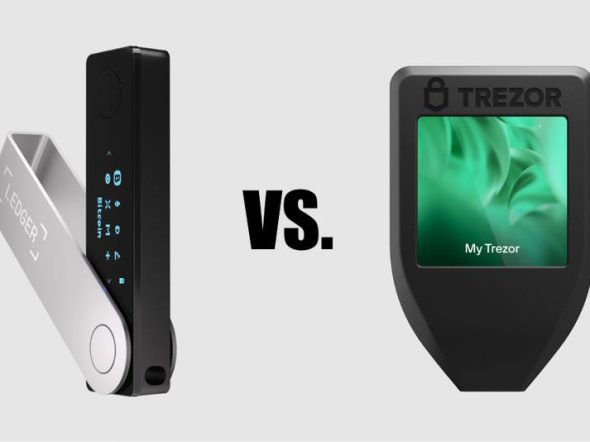Fiat money can be stored even in a tin can. With digital assets, this number will not work, they need special storage facilities. At first, coins can be stored on the exchange, but this method is not reliable enough. This is convenient if you are actively trading, you do not have to make unnecessary movements to change BTC to XMR.
When the amount on the account reaches a certain psychologically significant threshold, the user asks questions about the safety of funds. Starting to delve into the intricacies of organizing the storage of cryptocurrencies, each user will soon learn that the safest solution is a hardware wallet.
Trezor and Ledger devices invariably occupy the first lines of ratings. But which one is objectively better? The answer, as usual, is banal: the one that is more convenient for you personally.
What are hardware wallets?
A hardware wallet is a portable device with pre-installed software for storing cryptocurrency, more precisely, the user's private keys. Such devices are much more secure than any other storage versions.
First of all, this is due to the lack of a permanent connection to the Internet. Of course, any local wallet can also be taken offline. For example, install it on any removable media. However, if you plan to make any transaction, you will have to connect it to a device with internet. The transaction will still be made through the software wallet and at this time the private key is generally quite accessible to hackers.
A hardware wallet works differently. Yes, to send a transaction to the blockchain, it must also be connected to the Internet. But it is also a mini-computer in itself, and you can create and sign a transaction in it. Then briefly go online through an auxiliary device and send the transaction to the blockchain. In this case, the private key is not transmitted to the network in any way. This is not possible on other types of removable media.
Benefits of a hardware wallet
Why doesn't everyone use hardware wallets if they are that good? The question is quite logical and the answer to it is quite simple: first of all, it's a matter of price and time. Local, mobile and other versions of storages are freely available, downloading and setting up the software will take a maximum of 30 minutes.
A miniature hardware wallet is a fairly complex device and, by definition, cannot be free. Prices start at about $50 and go up to several thousand dollars. Add to this the cost of delivery and waiting time.
And yet, if you have accumulated a significant amount for you, and its loss will be very painful for you, it is better to purchase a hardware wallet. Of course, you can leave part of the capital on the exchange for active trading. Well, regardless of the chosen device model, you will still be able to freely exchange AVAX to BTC on any trading platform.
Trezor vs Ledger?
Let's take a look at the features of Trezor and Ledger to make it easier for you to choose the right wallet. Both companies have been on the market for a long time. Their products are very close in technical specifications, but not identical.
Coin support
Before spending a hundred dollars on a device, it is important to know exactly which coins it supports. Otherwise, disappointment is inevitable.
Both models support a significant number of popular digital assets. But currently the Ledger Nano S supports more coins than the Trezor. An important point: Ripple is not yet supported in Trezor, and to store Ether and other ERC-20 tokens, the device must be integrated with third-party applications. Ledger provides full programmatic support for this type of assets and no additional steps are required.
Price
Both devices belong to the same price category, costing about $100. The difference in price is a few dollars and it's definitely not the amount for which it is worth spending time.
Display
Both devices have miniature screens. Trezor was the first to do this. Later, the screen appeared at Ledger. The presence of the screen increases the safety of use:
- A seed phrase is displayed on the screen.
- You can see information about the transaction and it is easier to avoid typos in the transaction data.
The screen of Trezor devices is larger and objectively more convenient.
Customization and usability
Both devices are compatible with popular operating systems and connect to a computer via a micro USB connector. Setup is standard and involves setting a PIN and making a backup of your original recovery file.
Physical characteristics
The body of the Trezor device is made of plastic, while the Ledger is made of stainless steel. Steel looks very stylish, but more importantly, it is stronger than plastic.
The devices are equipped with two buttons for control. The Trezor buttons are located farther apart and this is more convenient.
Size
- Trezor wallet dimensions: 59mm x 30mm x 6mm
- Ledger wallet dimensions: 98mm x 18mm x 9mm
The size and shape do not affect the main functionality and personal choice is purely a matter of taste.
Safety
The Ledger Nano S uses very secure chips with the highest level of certification to store private keys. Trezor is not too open about this, but in addition to the security of the chip itself, the company limits the number of ways the wallet can interact.
And yet, you should follow some precautions regardless of the model of your gadget:
- Do not enter a seed phrase on third party devices.
- Keep your seed phrases in a safe place.
- Never take a photo of a seed phrase.
- Never use used devices.
